
Artificial Intelligence
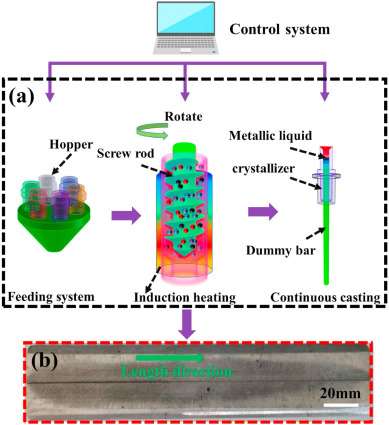
Investigation on microstructures, mechanical properties, and corrosion behavior of novel biodegradable Zn-xCu-xTi alloys after hot rolling fabricated by self-developed newly gradient continuous casting
The poor mechanical properties exhibited by pure Zn effectively prohibit its utilization as a viable material for biodegradable implants. Hence, the primary area of interest has been directed towards alloy design and process strategies of biodegradable Zn alloys. To this end, novel biodegradable Zn-xCu-xTi (Cu: x = 0.001–2.72 and Ti: x = 0.03–1.21) alloys were designed and fabricated using a gradient continuous casting method followed by homogenization and rolling. The fabricated samples were then investigated in terms of their microstructures, mechanical properties, and corrosion behavior
A superb mechanical behavior of newly developed lightweight and ductile Al0.5Ti2Nb1Zr1Wx refractory high entropy alloy via nano-precipitates and dislocations induced-deformation
The lightweight refractory high entropy alloys (RHEAs) can be considered the best alternative to Ni-based superalloys, which has significantly increased the attention of researchers. In this study, the newly designed lightweight (ρ ∼ 6.2 g/cm3) Al0.5Ti2Nb1Zr1WX (X: 0, 0.3, 0.5, 0.7) RHEAs were prepared. Our results evidence that the microstructure of Al0.5Ti2Nb1Zr1W0.5 RHEA has a BCC structure merged with B2 nano-precipitates, which leads to significant improvement in the specific yield strength (SYS) compared with other RHEAs. Besides, the compressive SYS (σ0.2/ρ) of Al0.5Ti2Nb1Zr1W0.5 RHEA
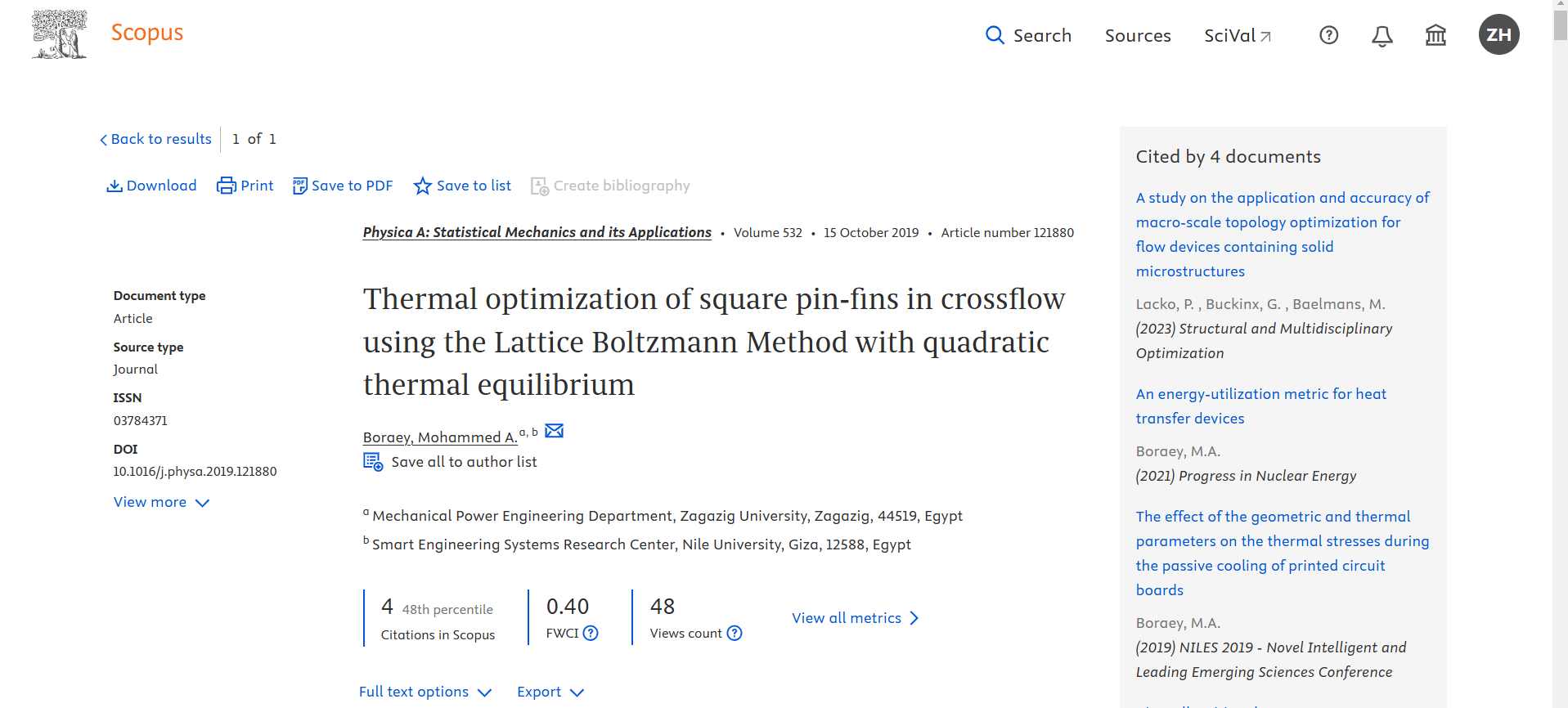
Thermal optimization of square pin-fins in crossflow using the Lattice Boltzmann Method with quadratic thermal equilibrium
The geometric spacing and operating Reynolds number (Re) for the best thermal performance of square pin-fin heat sinks is found numerically at a Prandtl number of 0.7. The numerical model used is the double population thermal Multiple-Relaxation-Time Lattice Boltzmann Method (MRT LBM). The Nusselt number (Nu), friction factor (f) and the Thermal Performance Factor (TPF) are calculated for a range of streamwise (0.5 to 3) and cross-streamwise (1 to 2) spacing ratios at Re numbers from 20 to 140. A quadratic thermal equilibrium distribution function is used instead of the commonly used linear
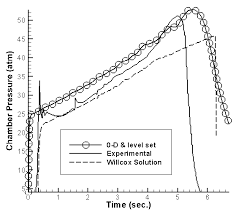
Solid rocket motor interior ballistics fluid-solid interaction simulation using level set method for 2D grains
The flow inside a solid rocket motor is considered taking into account the fluid-solid interaction between the combustion gases and the burning grain surface. An unsteady flow model is presented for the flow variables while the time-dependent burning surface is captured using the level set method. Then, a hybrid model is presented by coupling the flow model with the interface capturing technique. The proposed hybrid model is successfully tested against previously published experimental and numerical data. The use of the level set method enables the flow model to consider complex grain shapes
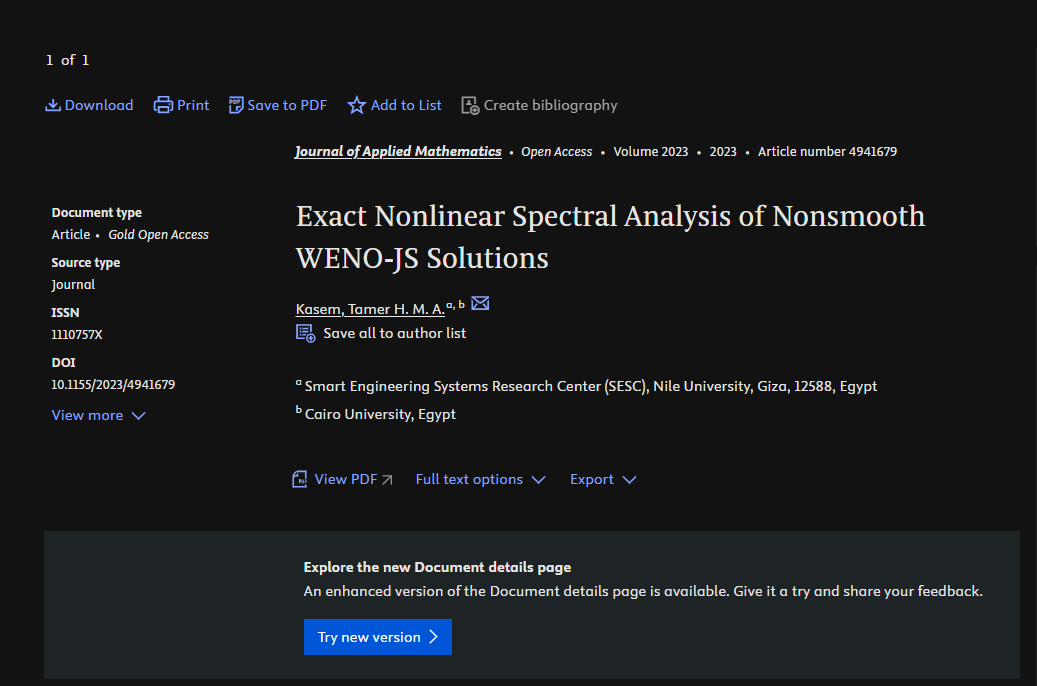
Exact Nonlinear Spectral Analysis of Nonsmooth WENO-JS Solutions
The fifth-order accurate Weighted Essentially Nonoscillatory space discretization developed by Jiang and Shu (WENO-JS) is studied theoretically. An exact Nonlinear Spectral Method (NSM) is developed based on an innovative yet simple methodology. The NSM explains the behaviour of nonsmooth solutions because it is valid for arbitrary modified wave numbers (MWN). The NSM clarifies the effects of the time integration methods and the Courant number. The mode isolation assumption, extensively used to analyse WENO-JS, is elucidated, and several novel findings are presented. The improved performance

Spinning dynamics of self-excited azimuthal acoustic modes in cavities
The coupling between the shear layer separating between axisymmetric leading and trailing edges and the azimuthal modes of a cavity may result in self-excited spinning acoustic resonance. Notably, the spinning direction remains one of the less understood features of the coupled mode dynamics. In this work, compressible large eddy simulation is used to model the excitation of azimuthal acoustic modes in rectangular cavities. To verify the effect of aspect ratio on the resonant acoustic mode excitation, three cavities with aspect ratios W/H = 1.0, 0.95, and 0.90 are considered, all with the same
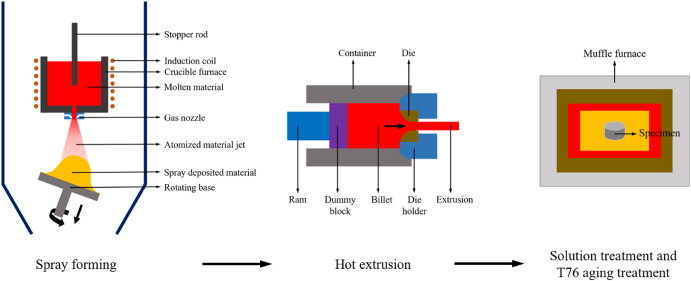
Effects of hot extrusion texture on anisotropy in microstructure and mechanical properties of spray formed Al–Zn–Mg–Cu 7055 aluminum alloy
The Al–Zn–Mg–Cu 7055 aluminum alloy was meticulously fabricated through spray forming (SF) technology, followed by hot extrusion and T76 treatment. This comprehensive process allowed for a thorough investigation of its microstructural characteristics, mechanical properties, and fatigue behavior. Post-treatment analysis revealed that the SF-7055 aluminum alloy exhibited no notable segregation or porosity defects, ensuring its exceptional quality and reliability. The microstructural analysis revealed a uniform distribution of refined grains and dispersed precipitates, contributing to the

Numerical Investigation for a Two-Dimensional Moving Flapping Wing
The aerodynamic performance of a moving flapping wing is investigated numerically using a fluid–solid interaction model. The flow field is assumed to be two-dimensional, viscous, unsteady, and incompressible. Galerkin-least/squares finite element method is used to account for the convective nature of the flow field. The flow solver is coupled with the rigid body equations of motion describing the movement of the flapping wing. An interface-capturing technique is developed and tailored to the present model to capture the flapping wing during its movement. The developed algorithm is validated
A Framework for Data Driven Dynamic Modeling of Serial Manipulators
Robot dynamic modeling and parameter identification are essential for many analyses. High-fidelity multi-body dynamics simulators can model the robot's dynamic behavior, but they can't identify the robot's non-linear dynamic model needed for controller design. This study proposes a three-step machine-learning framework for extracting the dynamic equations of serial manipulators from data. This framework consists of three steps. Initially, a library of candidate functions is constructed, together with a data set based on the robot's unforced response. Secondly, the best models that can
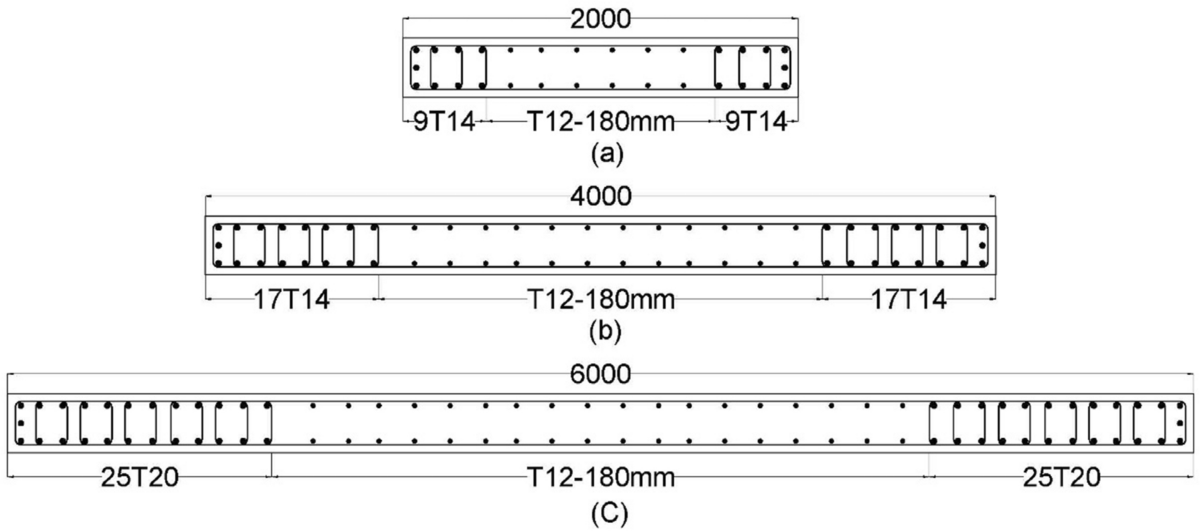
Estimation of Corrosion-Free Reinforcement as Replacement to Steel Rebars for Concrete Walls
Reinforced concrete (RC) walls are commonly used in various structures to resist lateral forces. In the current paper, hybrid usage of stainless steel (SS) and glass fiber-reinforced polymer (GFRP) as an alternative of steel rebars, which is susceptible to corrosion, is proposed to improve durability of RC walls. Due to the high cost of SS compared to GFRP, SS rebars are utilized as concentrated reinforcement (RFT) in plastic hinge regions while GFRP rebars are used elsewhere. This combination has the advantage of providing adequate ductility and strength needed to resist both gravity and